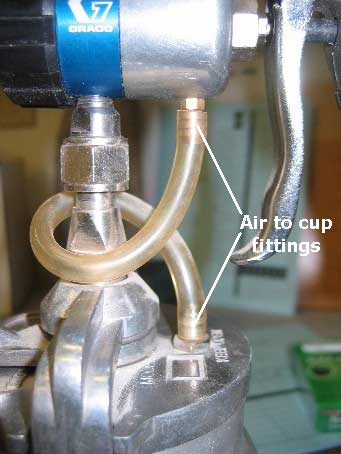Fine Points of Painted Cabinet Finishes
Depending on the situation, paint can be a high-end cabinet finish. Here's a discussion of such a case. September 26, 2013
Question (WOODWEB Member) :
We have a customer wanting a brush stroke finish using Farrow and Ball water base paint. I cannot get a good finish. There are what appear to be dry patches in areas that I know was wet a second ago - very frustrating. Has anyone had the same problem? We usually spray finish.
Forum Responses
(Finishing Forum)
From contributor J:
Spray with an airless or thin with a cup gun. If the client wants brush strokes, use gesso first with a brush. Slop it on!
From contributor P:
They've changed their whole line of products to water-based and messed with the product names too. I'm in the middle of multiple projects in the same house where all the trim was painted using their oil-based paint, which is now off the market. They make paints for walls, trim, and even metal. Don't over-brush it. You could also try some Floetrol additive. Test it first on some scrap!
From contributor A:
Farrow and Ball is an emulsion but not just for walls. It is used extensively on woodwork and even kitchen cabinets. I have done this finish many times and before you dismiss so freely you might want to check out the six-figure English kitchens that are painted this way. Be careful using a brush and slopping it on. You want to use a really good quality brush (Omega Italian brushes are what I use). This finish takes much more skill than you think. The quick version of how I did it is sprayed a cover coat then with the right consistency, a finely brushed coat then sealed with a matte clear top coat. I also added a few other effects for character.
From the original questioner:
Iíve been out of town and was more than a little wound up when I asked the question. We use Sayerlack as a top coat on stained and natural cabinets and I sprayed some of the brushed finish with it. It seemed to even things out. We do not have the time to run our usual testing for trying something new. This house is on an island off Massachusetts and is a big job. They changed to brush stroke well into the job. What do you think of Sayerlack as a top coat?
From contributor A:
I've never used Sayerlack but what I know of it it's a good product. All I use these days is Italian water-base polyurethane, catalyzed when in a kitchen environment. How did you work out the brush stroke effect?
From the original questioner:
I haven't tried it yet but my plan is to add an extender to the paint, bring the humidity up, paint the edges and profiles first, let dry before faces and backs, double team the bigger areas, and then add two coats of sealer. I have spent the day priming sample pieces and I will try this next.
From contributor C:
Farrow and Ball do a water-base eggshell paint that is suitable for cabinets. It's an alkyd paint made reducible by water. A good foam roller and tipping-off with a very good brush. They say you have to go over their primer. A trick is to mist the cabinet surface with very fine water mist (no droplets on surface), or wipe over with a damp J-cloth (or other lint-free cloth), then roll and tip off. With a bit of practice you can achieve a totally flat finish.
